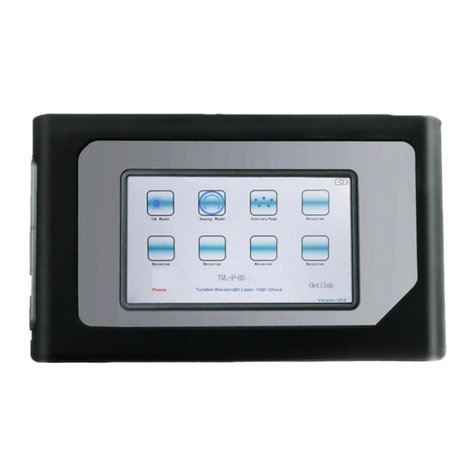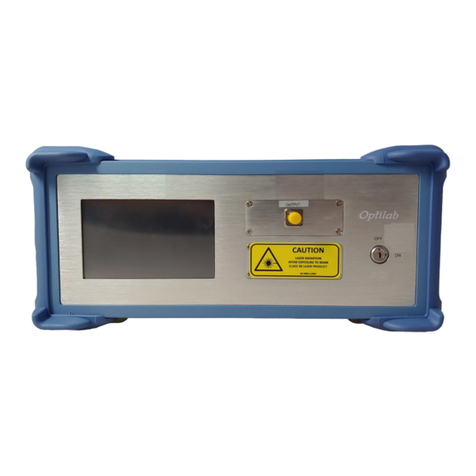Optilab, LLC
600 E. Camelback Road, Phoenix, AZ 85012
Phone: (602) 343-1496, Fax: (602) 343-1489, Email: sales@oequest.com
1. General Information
1.1. Introduction
This manual contains information on the installation and operation of the TWL-C-M
C-band tunable wavelength laser source.
1.2. Product Overview
The TWL-C-M is a wavelength tunable laser module in C band based on integrated
tunable laser assembly (ITLA). The TWL-C-M alleviates inventory and costs in high-
channel-count DWDM systems by allowing a single device to replace each of the
single-channel devices. Full-band tunable assemblies also enable system
functionality such as hot back-up and dynamic provisioning in addition to applications
of optical regeneration and wavelength conversion, with the HP version also
including a built-in sweep function for continuous scanning applications. The TWL-C-
M has a low Relative Intensity Noise (RIN), a high Side-Mode Suppression Ratio
(SMSR), an ultra-narrow linewidth, and excellent wavelength accuracy. Its RS232
control complies to OIF ITLA Multi Source Agreement (MSA) standard, with a
provided GUI software for intuitive control of the wavelength and optical power. The
TWL-C-M can be used for Dense Wavelength Division Multiplexing (DWDM) optical
transceivers and DWDM discrete line card designs.
1.3. Features
•Wide wavelength tuning range from 1527.6nm to 1567.13nm
•Precise Wavelength step resolution of 1 MHz
•High optical output power of 50 mW
•Ultra narrow laser line width <10 kHz
•Continuous wavelength sweeping function
•Linewidth broadening to 750 MHz
•Excellent Side Mode Suppression Ratio of 55 dB
•Polarization Maintaining (PM) Output
•Intuitive and easy to use USB interface





























